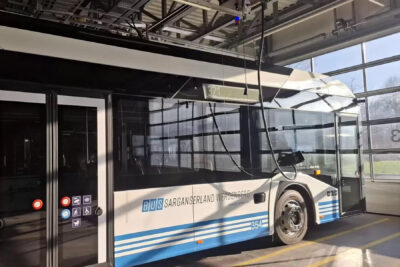Product ramp-ups and sluggish demand tear holes in Polestar’s balance sheet
Polestar posted a loss of around 1.17 billion US dollars last year – compared to a loss of 481 million dollars in 2022. This meant that Polestar’s red figures skyrocketed last year. At the same time, turnover remained almost constant: between 2022 and 2023, it fell by three per cent to 2.38 billion US dollars. In the same period, vehicle deliveries rose by six per cent to exactly 54,626 electric cars.
Polestar cites the fact that it had higher inventories in 2023 and had to sell vehicles at a higher discount as the reason for the financially negative development. There were also lower sales of emission credits and a general increase in the cost of materials and services. At the same time, Polestar invested more – primarily “in intellectual property for the Polestar 2, Polestar 3 and Polestar 4”, according to an official statement.
The balance sheet shows the ongoing model change in Polestar sales. This is because the company is evolving from a manufacturer with just one model, the Polestar 2, to a larger portfolio with deliveries of the Polestar 4 and Polestar 3, which launched in February. Although the Polestar 2 has been significantly improved for the 2024 model year (here is our driving report), some prospective customers may currently be hesitating whether to choose the refreshed but outdated Polestar 2 or wait for the slightly larger Polestar 4 – or whether to opt for an electric saloon from the competition.
And the financially challenging times are not over yet. Polestar’s sales also fell sharply in the first quarter of 2024: Polestar delivered around 7,200 vehicles in the first three months of the year, around 40 per cent fewer than in the same quarter of the previous year.
Polestar’s statement that “customer deliveries of Polestar 3 have now started and will ramp up over the summer” indicates that the worst may be over. The first places for test drives in Europe have already been allocated and production in South Carolina is scheduled to start at the end of the summer.
Polestar also announced in mid-June that it would be expanding its retail presence with existing and new partners. This measure is part of the switch to a “non-genuine agency model” in Europe. The Swedish-Chinese electric brand will continue to maintain direct online sales but also wants to enable customers to order their vehicles in the “traditional” way via the growing network of Polestar Spaces and service centres. At the end of 2023, Polestar had 192 retail locations and 1,149 service points in its markets – 34 and 33 more than a year earlier respectively.
Polestar plans to enter seven new markets by 2025, including France, the Czech Republic, Slovakia, Hungary, Poland, Thailand and Brazil. With the exception of France, where the company is also planning its own presence, market entries will take place via local partnerships.





1 Comment